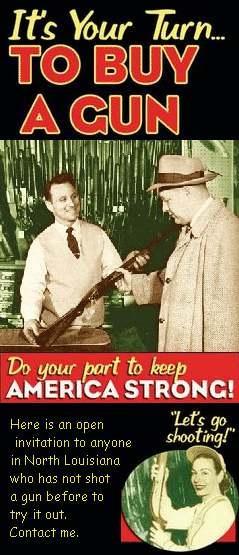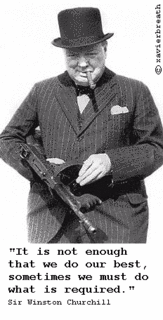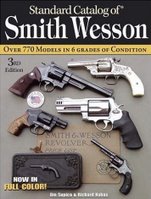Roper Stocks
 although it was chambered in 22 long rifle, unusual for a Colt Official Police revolver.
although it was chambered in 22 long rifle, unusual for a Colt Official Police revolver. The rear of the cylinder was engraved with a number beside each chamber, and the cylinder lock was cut away to reveal the number to the shooter. Even that was not what interested me the most. What caught my eye were the grips, properly known as stocks on a revolver. I immediately purchased the Colt Official Police for $350.
Advertisements for Roper stocks peppered the gun publications of the 1930s. Ropers were also offered from the factory on Colt and Smith & Wesson revolvers of the time. Roper stocks were marketed by Walter Roper, a marksman from the time of Skeeter Skelton. However, they were actually handmade, one set at a time, by an old world artisan named Matheis Gagne. The rough stocks were first hand chiseled from a single piece of circassian walnut to achieve a tight frame fit. Next, Mr. Gagne would work from a mailed in outline of the purchaser's hand to design the form of the stocks.
 He would use a file to shape the wood to provide support of the handgun on the shooter's second finger, and to fill the hand with an individual palm swell.
He would use a file to shape the wood to provide support of the handgun on the shooter's second finger, and to fill the hand with an individual palm swell.Mr. Gagne used an old v-notch cutting tool to carve the exquisite three lobe checkering with a solid ribbon running through it. The stocks were finished with linseed oil with shellac added to give the wood a sealed effect and a slight sheen. Roper stocks were available for all common revolvers of the day, as well as popular pistols such as the 1911 and the Colt Woodsman. The stocks could be ordered with or without a thumb rest. In the 1930s, Roper stocks sold for eight to ten dollars, depending on the variation. Today, they commonly change hands for well over three hundred.
To broaden his market, Walter Roper hired W.D.H. Nichols to specialize in stocks for pistols. Later, when demand peaked, machine checkered Roper stocks were offered for a few dollars less. Often, if a set of stocks is missing the characteristic ribbon or three lobed pattern that is so representative of Gagne's work, a collector may wonder if the stocks are really of Roper design. Authentic Roper stocks exist that are fully checkered. They are either very early or later, machine checkered stocks. Many Roper pistol stocks do not have the ribbon because they were carved by Nichols.
Each set of Roper stocks is as unique as the hand it was designed for. They rarely appear on the market, and when they do, they command exorbitant prices. As a result, there are several grip makers, most notably Keith Brown, hand crafting revolver grips in the style of Matheis Gagne.
 These craftsmen are not attempting to deceive collectors, indeed they should be recognized for the beauty of their own work.
These craftsmen are not attempting to deceive collectors, indeed they should be recognized for the beauty of their own work. One way to identify genuine Roper designed stocks made by Matheis Gagne in Walter Roper's shop is to examine the inside of the grip panels. Stocks created by Mr. Gagne will have two small rectangular indentations put here by the jigs used to hold the panels while they were checkered. The modern day craftsmen working in the style of Matheis Gagne do not use the same type of jig, and those indentations are absent. Oddly, another way to identify genuine Ropers is the grain of the walnut is rather pedestrian. Roper stocks were crafted to be carried and shot, not exhibited.
As a period aftermarket S&W revolver accessory, Roper stocks have no peer. I have been known to casually wander a gun show floor with my Colt Official Police grasped in my hand with the stocks exposed to view. It never fails to attract attention from the grizzled old sellers behind the tables as they elbow each other and beckon me over. No, it's not for sale.
Labels: Roper Grips

























































